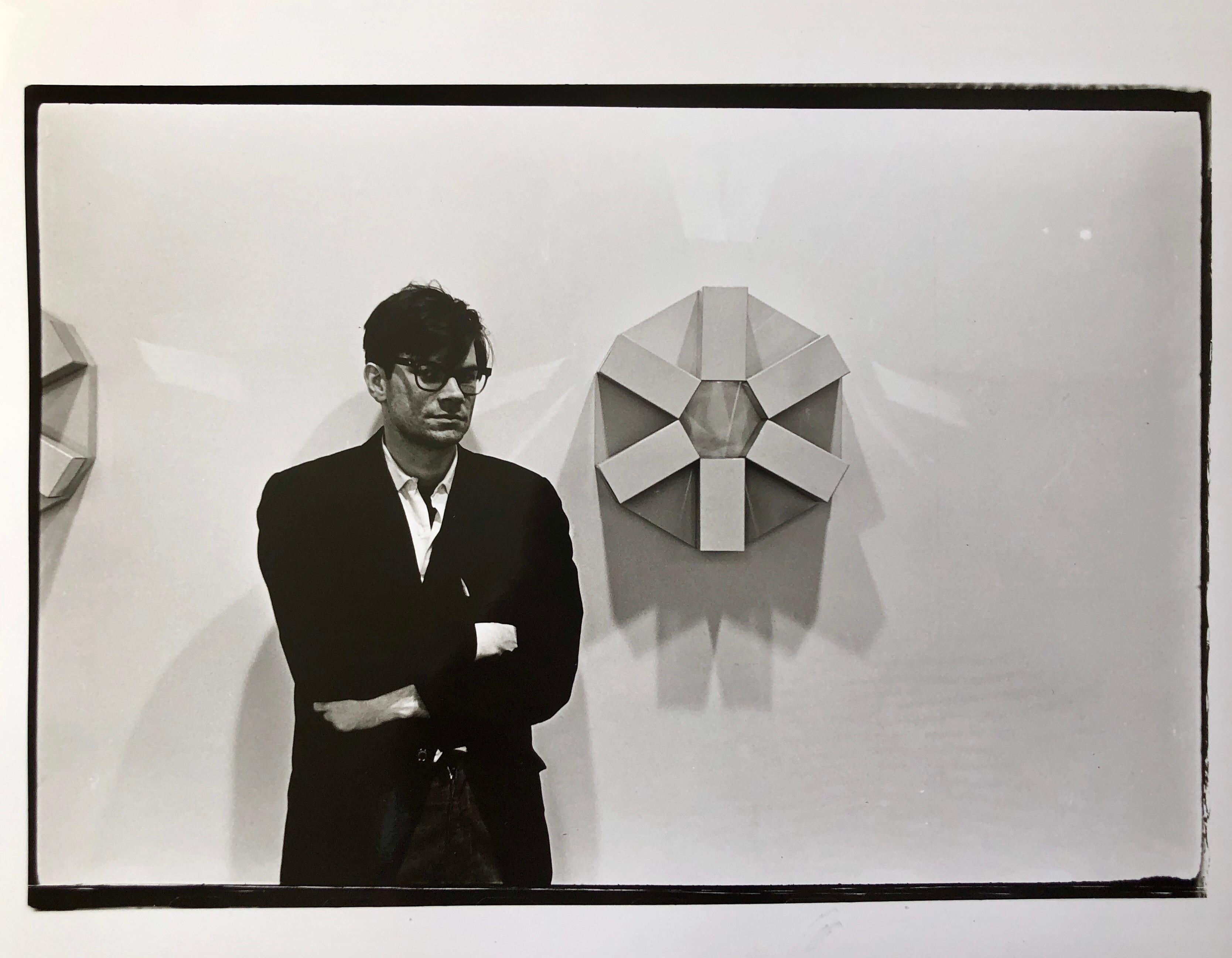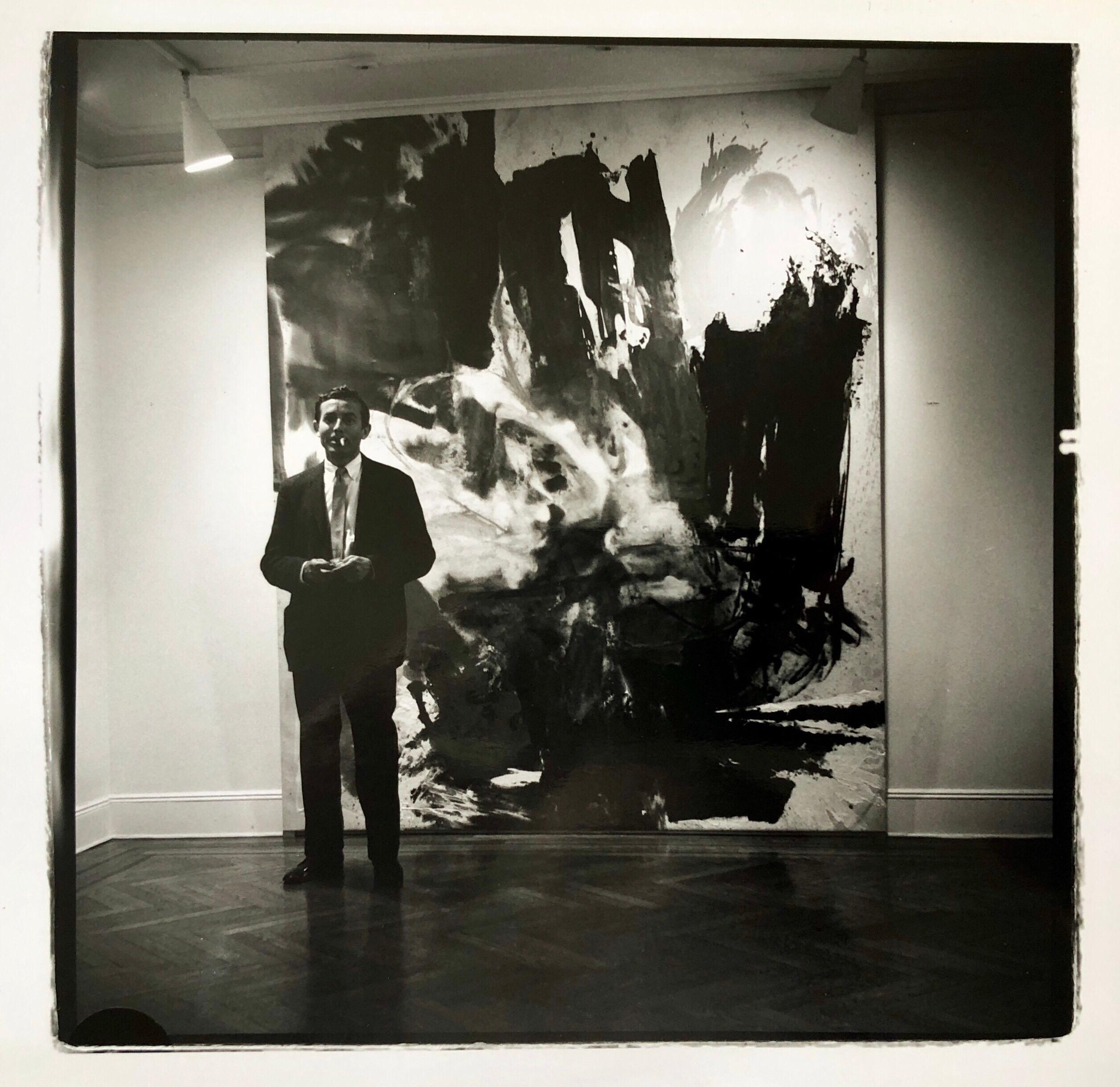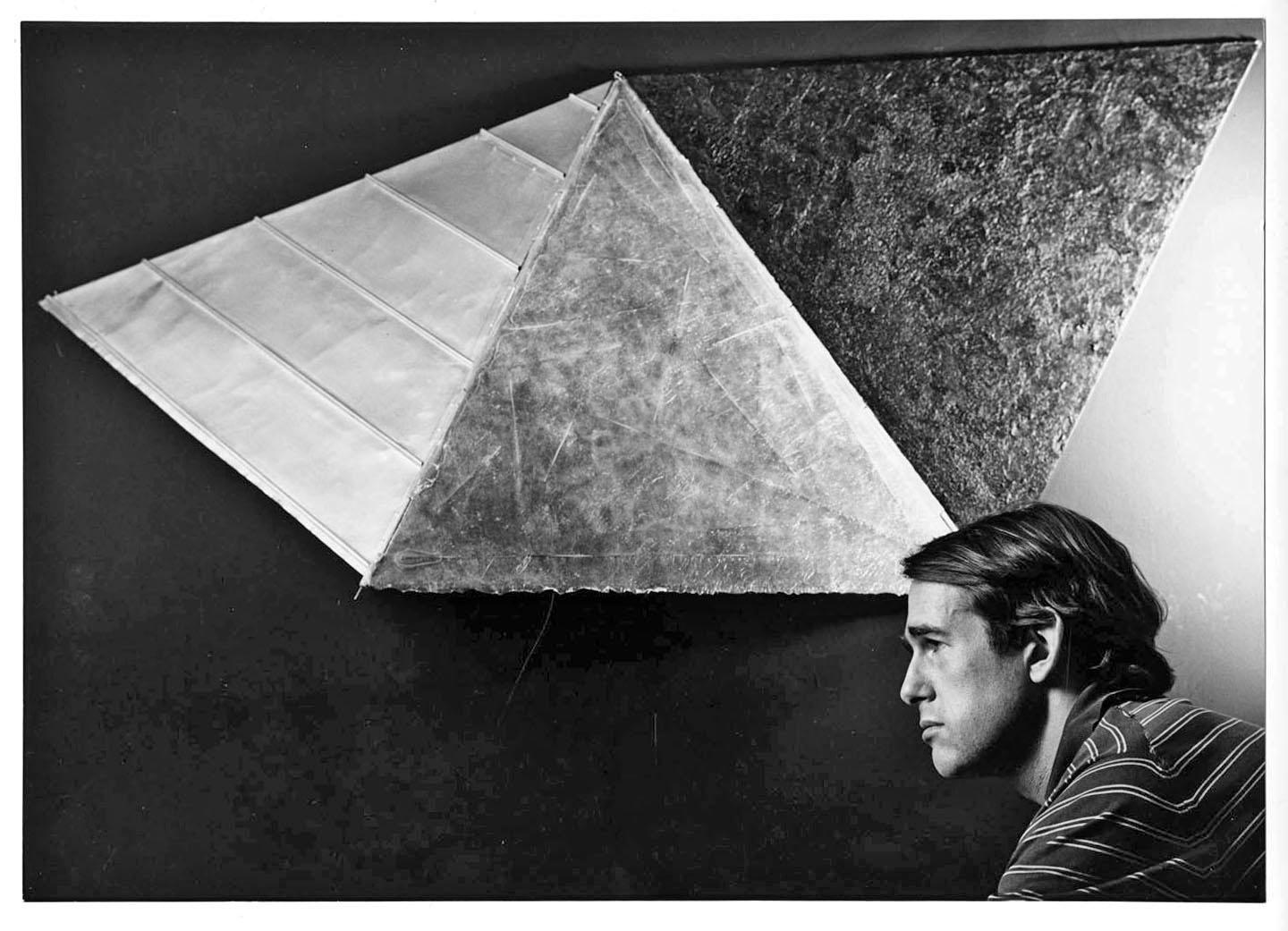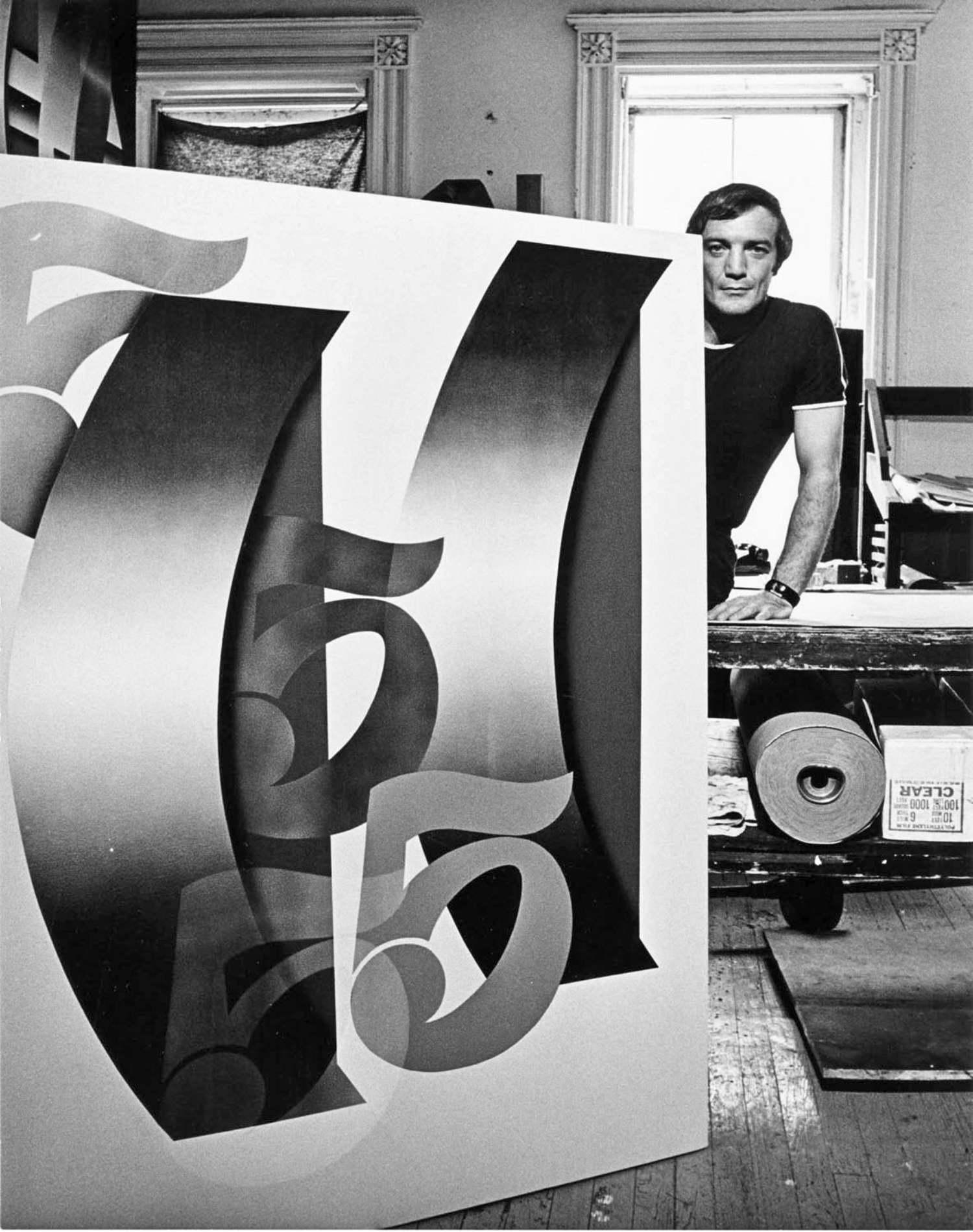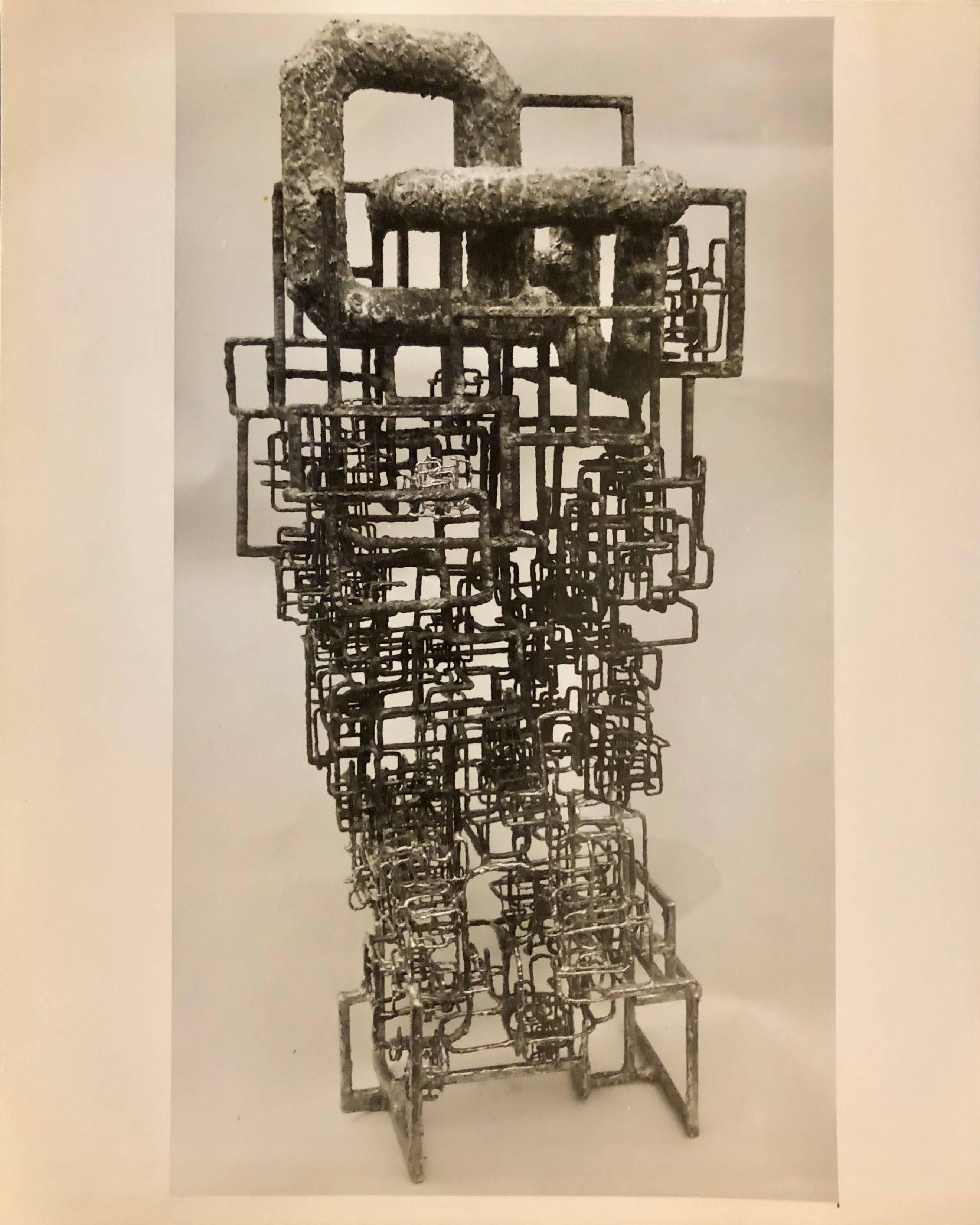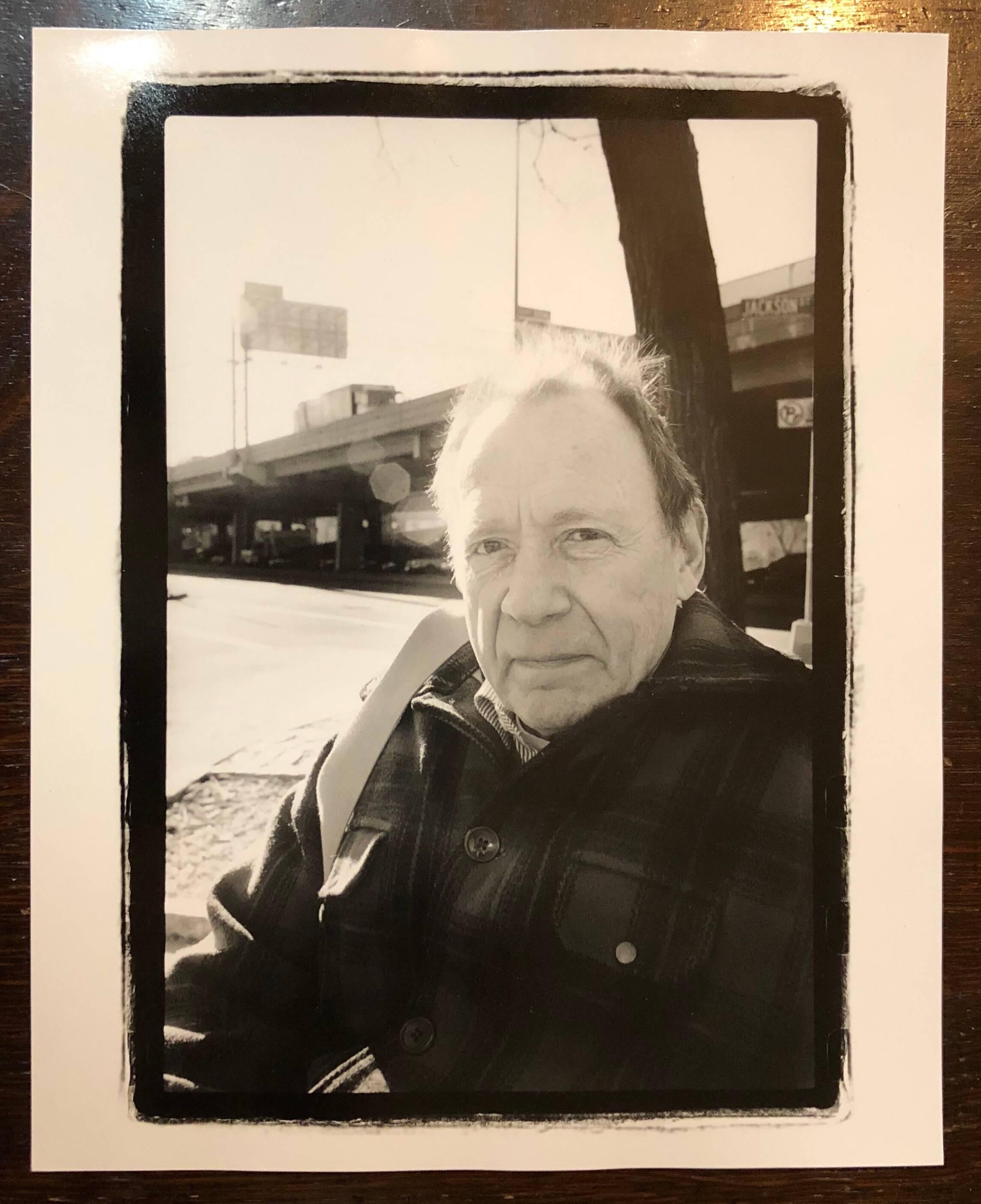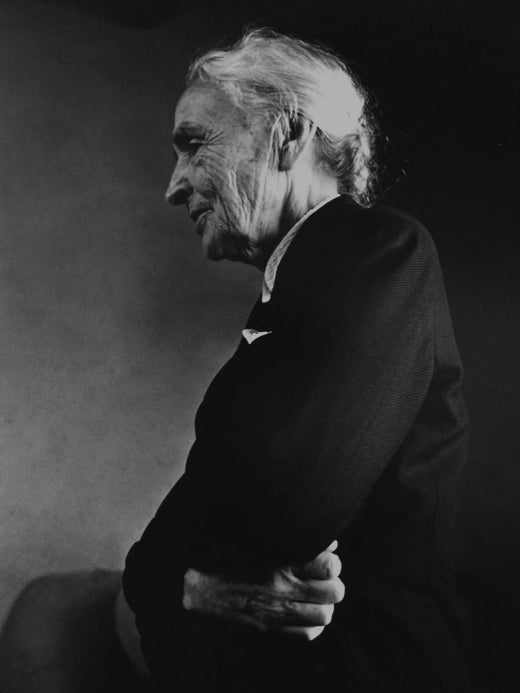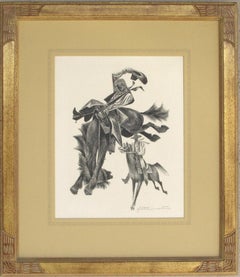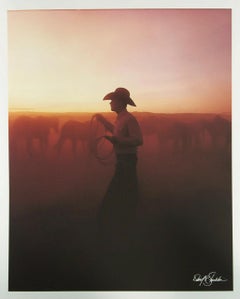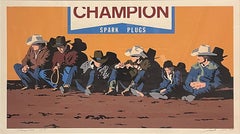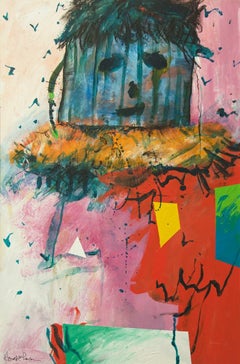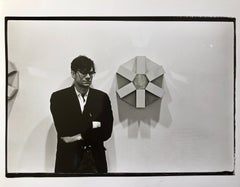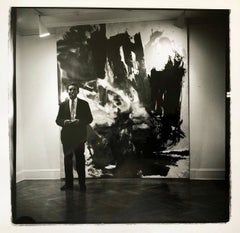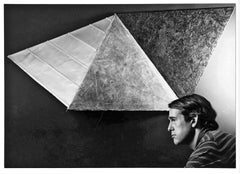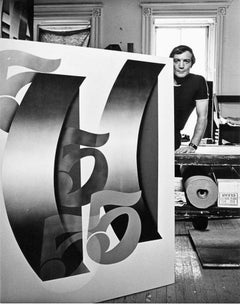Items Similar to David Smith with Voltri XV - Bolton 1963 by Dan Budnik
Want more images or videos?
Request additional images or videos from the seller
1 of 12
Dan BudnikDavid Smith with Voltri XV - Bolton 1963 by Dan Budnik1963
1963
$8,500
£6,424.95
€7,383.41
CA$11,836.20
A$13,167.29
CHF 6,902.46
MX$160,901.01
NOK 87,894.16
SEK 82,740.19
DKK 55,114.32
Shipping
Retrieving quote...The 1stDibs Promise:
Authenticity Guarantee,
Money-Back Guarantee,
24-Hour Cancellation
About the Item
SHIPPING CHARGES INCLUDE SHIPPING, PACKAGING & **INSURANCE**
DAN BUDNIK (American, b. 1933-2020
David Smith with Voltr1-Bolton XV, Terminal Iron Works, Bolton Landing, N. Y. 1963
Vintage Print on Afga Paper, Silver gelatin, March 1963, printed 1992 by Igor Bakht
Paper: 24 x 20 inches
Image: 16.38 x 13 inches
Recto: signed in black ink in artist's hand
Verso: titled, dated, signed in graphite in artist's hand, printer information in graphite
State: unmounted.
Dan Budnik 1933-2020
As a photojournalist, Dan Budnik is known for his photographs of artists, but also for his photo-documentation of the Civil Rights Movement and of Native Americans. Born in 1933 in Long Island, New York, Budnik studied with Charles Alston at the Art Students League of New York (1951-53) and began his photography career as Philippe Halsman’s assistant. Working at Magnum Photos (1957-64) in 1963, Budnik persuaded Life Magazine to have him create a long-term photo essay showing the seriousness of the Civil Rights Movement, documenting the Selma to Montgomery march and other historical Civil Rights moments. Budnik went on to photograph for premier publications such as Life, Fortune, Look, Newsweek, Sports Illustrated and Vogue.
He has been a major contributor to eight Time-Life Wilderness and Great Cities series and received a 1973 grant from the National Endowment for the Arts for his work on the Hudson River Ecology Project and a 1980 grant from the Polaroid Foundation for Big Mountain: Hopi-Navajo Forced Relocation.
Biography
Pastaza, Ecuador, December 2004 Photo by Kresta King Cuther
Pastaza, Ecuador, December 2004 Photo by Kresta King Cuther
Dan Budnik, (b. 1933-died 2020), whose career as a photographer has spanned more than half a century, was most recent recipient, in 1998, of the prestigious American Society of Media Photographers Honor Roll Award, an accolade previously accorded to such eminent photographers as Man Ray, Edward Steichen, Walker Evans, Dorothea Lange, André Kertész, Ernst Hass, and Henri Cartier-Bresson. After studying with Charles Alston at the Art Students League of New York (1951-53), Budnik began his career as a Magnum photographer.
His photo-essays have appeared in periodicals that include Art in America, LIFE Magazine, Fortune, The London Sunday Times, Magazine, Look, Modern Photography, Newsweek, The New York Times Magazine, Réalités and Vogue. He has been a major contributor to many books, including six from the Time-Life Wilderness and Great Cities series. Budnik’s photographs appear in “The Museum: An Informal Introduction to The Museum of Modern Art” by Richard Schickel (1970). He is included in two seminal histories of photography: Nathan Lyons’ “Photography in the Twentieth Century” (1967) and “The Picture History of Photography from the Earliest Beginnings to the Present Day”, by Peter Pollack (1977).
Dan Budnik lives in Tucson, Arizona and is currently involved with creating a photographic record of ancient petroglyphs. Widely acclaimed for his photo-documentation of Native Americans (including his collaboration with Sandy Johnson on “The Book of Elders: The Life Stories of Great American Indians”, 1994), the Civil Rights Movement, and environmental issues. Budnik received a 1973 grant from the National Endowment for the Arts for his work on the Hudson River Ecology project and a 1980 grant from the Polaroid Foundation for Big Mountain: Hopi-Navajo Forced Relocation.
The scope of Dan Budnik’s documentation of major 20th century artists has yet to be fully recognized. In addition to David Smith, he photographed Georgia O’Keeffe, Lee Bontecou, Alexander Calder, John Chamberlain, Willem de Kooning, Helen Frankenthaler, Jasper Johns, Roy Lichtenstein, Robert Motherwell, Mark Rothko, and many others.
Dan Budnik’s photographs of David Smith first appeared as an April 5, 1963 photo essay for LIFE Magazine. They were first exhibited, in 1974, at the University Art Museum State University of New York, Albany, The Cooper Union for the Advancement of Science and Art, New York, and Rice University, Houston, Texas. The same exhibition circulated nationally under the auspices of the American Federation of Arts, from 1975-78. They have been widely published, and have become an essential part of the extensive body of literature on Smith. Twenty-four of Budnik’s photographs of Smith are reproduced in the catalogue of the current exhibition at The Solomon R. Guggenheim Museum, David Smith: A Centennial.
Selected Public Collections
Albright-Knox Art Gallery, Buffalo, New York
The Albuquerque Museum, New Mexico
Center for Creative Photography, The University of Arizona, Tucson
The Cleveland Museum of Art, Ohio
Guild Hall, East Hampton, New York
Indiana University Art Museum, Bloomington
Museum Ludwig, Cologne, Germany
Museum of Fine Arts, Houston, Texas
The Museum of Modern Art, New York
Museum of New Mexico, Santa Fe
Harry Ransom Center, The University of Texas at Austin
Roswell Museum and Art Center, New Mexico
Seattle Art Museum, Washington
Worcester Art Museum, Massachusetts
- Creator:Dan Budnik (1933, American)
- Creation Year:1963
- Dimensions:Height: 19.38 in (49.23 cm)Width: 13 in (33.02 cm)
- Medium:
- Movement & Style:
- Period:
- Condition:DAN BUDNIK (American, b. 1933-2020 David Smith with Voltr1-Bolton XV, Terminal Iron Works, Bolton Landing, N. Y. 1963 Vintage Print on Agfa Paper, Silver gelatin, March 1963, printed 1992 by Igor Bakht Paper: 24 x 20 inches Image: 16.38 x 13 inches.
- Gallery Location:Phoenix, AZ
- Reference Number:1stDibs: LU2623212945372
Dan Budnik
Dan Budnik (Long Island NY, 1933 – Tucson AZ, 2020) studied painting at the Art Students’ League of New York. After being drafted, he started photographing the New York school of Abstracts Expressionist and Pop Artists in the mid-fifties, making it a primary focus for several decades. He made major photo-essays on Willem de Kooning and David Smith, among many other artists. It was his teacher Charles Alston at the Art Students’ League of New York, the first African American to teach at the League, who inspired his interest in documentary photography and the budding Civil Rights Movement. In 1957 he started working at Magnum Photos, New York, assisting several photographers, notably Cornell Capa, Burt Glinn, Eve Arnold, Ernst Haas, Eric Hartmann and Elliott Erwitt. In March 1958 Budnik travelled to live with the underground in Havana for 6 weeks during the Cuban revolution. Budnik continued to work with Magnum for half of his time, until joining as an associate member in 1963. In 1964 he left Magnum and continued specializing in essays for leading national and international magazines, focussing on civil and human rights, ecological issues and artists. Since 1970 Budnik has worked with the Hopi and Navaho traditional people of northern Arizona, and received for this work a National Endowment for the Arts Grant in 1973 and a Polaroid Foundation Grant in 1980. In 1998 he was the recipient of the Honor Roll Award of the American Society of Media Photographers.
About the Seller
No Reviews Yet
Vetted Professional Seller
Every seller passes strict standards for authenticity and reliability
1stDibs seller since 2023
5 sales on 1stDibs
Typical response time: <1 hour
- ShippingRetrieving quote...Shipping from: Phoenix, AZ
- Return Policy
Authenticity Guarantee
In the unlikely event there’s an issue with an item’s authenticity, contact us within 1 year for a full refund. DetailsMoney-Back Guarantee
If your item is not as described, is damaged in transit, or does not arrive, contact us within 7 days for a full refund. Details24-Hour Cancellation
You have a 24-hour grace period in which to reconsider your purchase, with no questions asked.Vetted Professional Sellers
Our world-class sellers must adhere to strict standards for service and quality, maintaining the integrity of our listings.Price-Match Guarantee
If you find that a seller listed the same item for a lower price elsewhere, we’ll match it.Trusted Global Delivery
Our best-in-class carrier network provides specialized shipping options worldwide, including custom delivery.More From This Seller
View AllHigh Wide and Handsome by Fletcher Martin 1953, Original Stone Lithograph
By Fletcher Martin
Located in Phoenix, AZ
SHIPPING CHARGES INCLUDE SHIPPING, PACKAGING & **INSURANCE**
Fletcher Martin
Size: 16 x12 inches
Stone lithograph
Frame 25 x 21 inches
High, Wide and Handsome- - 1953, Lithograph....
Category
1950s Contemporary Figurative Prints
Materials
Lithograph
Western Ranching and Cowboy Lifestyle Photography by David Stoecklein
Located in Phoenix, AZ
SHIPPING CHARGES INCLUDE SHIPPING, PACKAGING & **INSURANCE**
Untitled (Sunrise with Cowboy) by David Stoecklein 1949-2014
Photograph, Archival Pigment Print, Mat Finish
Image size 30 x 24 inches
Signed: Lower right
David Stoecklein
July 11, 1949 - Nov. 10, 2014
David Stoecklein launched his photography career by taking lifestyle shots of skiing, fishing, hiking, and biking, landing assignments for companies such as Coca-Cola, Ski Magazine...
Category
2010s Contemporary Figurative Photography
Materials
Archival Pigment
Champion by Billy Schenck
By Bill Schenck
Located in Phoenix, AZ
SHIPPING CHARGES INCLUDE SHIPPING, PACKAGING & **INSURANCE**
Champion 1979
Billy Schenck
Serigraph
Image size: 16 x 27 inches
Billy Schenck has been known internationally for 44 ye...
Category
1980s Contemporary Figurative Prints
Materials
Screen
Harold Larsen, Pueblo Dancer, Oil Painting on board
By Harold Larsen
Located in Phoenix, AZ
Pueblo Dancer
Harold Larsen
Oil Painting on board
30 x 20 inches
Harold “Hal” E. Larsen (1934 – ) was born in Gowen, Michigan in 1934 and moved to Santa...
Category
1990s Contemporary Figurative Paintings
Materials
Oil
The Bronc by Lon Megargee
Located in Phoenix, AZ
Lon Megargee 1883-1960
"The Bronc"
Wood block print
Signed in plate, lower right
Image size: 9 x 10 inches
Frame size 21 x 21.5 inches
Creator of Stetson's hat logo "Last Drop from his Hat"
Lon Megargee
1883 - 1960
At age 13, Lon Megargee came to Phoenix in 1896 following the death of his father in Philadelphia. For several years he resided with relatives while working at an uncle’s dairy farm and at odd jobs. He returned to Philadelphia in 1898 – 1899 in order to attend drawing classes at the Pennsylvania Academy of the Fine Arts. Back in Phoenix in 1899, he decided at the age of 16 to try to make his living as a cowboy.
Lon moved to the cow country of Wickenburg, Arizona where he was hired by Tex Singleton’s Bull Ranch. He later joined the Three Bar R. . . and after a few years, was offered a job by Billy Cook of the T.T. Ranch near New River. By 1906, Megargee had learned his trade well enough to be made foreman of Cook’s outfit.
Never shy about taking risks, Lon soon left Cook to try his own hand at ranching. He partnered with a cowpuncher buddy, Tom Cavness, to start the El Rancho Cinco Uno at New River. Unfortunately, the young partners could not foresee a three-year drought that would parch Arizona, costing them their stock and then their hard-earned ranch.
Breaking with his romantic vision of cowboy life, Megargee finally turned to art full time. He again enrolled at the Pennsylvania Academy of Art and then the Los Angeles School of Art and Design during 1909 – 1910. The now well-trained student took his first trip to paint “en plein air” (outdoors) to the land of Hopi and Navajo peoples in northern Arizona. After entering paintings from this trip in the annual Territorial Fair at Phoenix, in 1911, he surprisingly sold his first oil painting to a major enterprise – the Santa Fe Railroad . . . Lon received $50 for “Navajos Watching the Santa Fe Train.” He soon sold the SFRR ten paintings over the next two years. For forty years the railroad was his most important client, purchasing its last painting from him in 1953.
In a major stroke of good fortune during his early plein-air period, Megargee had the opportunity to paint with premier artist, William R. Leigh (1866 – 1955). Leigh furnished needed tutoring and counseling, and his bright, impressionistic palette served to enhance the junior artist’s sense of color and paint application. In a remarkable display of unabashed confidence and personable salesmanship, Lon Megargee, at age 30, forever linked his name with Arizona art history. Despite the possibility of competition from better known and more senior artists, he persuaded Governor George Hunt and the Legislature in 1913 to approve 15 large, historic and iconic murals for the State Capitol Building in Phoenix. After completing the murals in 1914, he was paid the then princely sum of roughly $4000. His Arizona statehood commission would launch Lon to considerable prominence at a very early point in his art career.
Following a few years of art schooling in Los Angeles, and several stints as an art director with movie studios, including Paramount, Megargee turned in part to cover illustrations for popular Western story magazines in the 1920s.
In the 1920s, as well, Lon began making black and white prints of Western types and of genre scenes from woodblocks. These prints he generally signed and sold singly. In 1933, he published a limited edition, signed and hard-cover book (about 250 copies and today rare)containing a group of 28 woodblock images. Titled “The Cowboy Builds a Loop,” the prints are noteworthy for strong design, excellent draftsmanship, humanistic and narrative content, and quality. Subjects include Southwest Indians and cowboys, Hispanic men and women, cattle, horses, burros, pioneers, trappers, sheepherders, horse traders, squaw men and ranch polo players. Megargee had a very advanced design sense for simplicity and boldness which he demonstrated in how he used line and form. His strengths included outstanding gestural (action) art and strong figurative work. He was superb in design, originality and drawing, as a study of his prints in the Hays collection reveals.
In 1944, he published a second group of Western prints under the same title as the first. Reduced to 16 images from the original 28 subjects, and slightly smaller, Lon produced these prints in brown ink on a heavy, cream-colored stock. He designed a sturdy cardboard folio to hold each set. For the remainder of his life, Lon had success selling these portfolios to museum stores, art fairs and shows, and to the few galleries then selling Western art.
Drawing on real working and life experiences, Lon Megargee had a comprehensive knowledge, understanding and sensitivity for Southwestern subject matter. Noted American modernist, Lew Davis...
Category
Early 20th Century American Impressionist Figurative Prints
Materials
Woodcut
Bill Schenck, Last Horizon, Serigraph
By Bill Schenck
Located in Phoenix, AZ
SHIPPING CHARGES INCLUDE SHIPPING, PACKAGING & **INSURANCE**
Last Horizon, 1991
Bill Schenck
Serigraph, Printers Proof
Size: 27.75 x 29.75 inches
UNFRAMED
SHIPPING CHARGES INCLUDE...
Category
1990s Contemporary Landscape Prints
Materials
Screen
You May Also Like
Vintage Print Silver Gelatin Signed Photograph Robert Smithson Land Art Artist
By Fred McDarrah
Located in Surfside, FL
Robert Smithson (January 2, 1938 – July 20, 1973) was an American artist who used photography in relation to sculpture and land art.
signed in ink and with photographer stamp verso and hand written title.
Over a 50-year span, McDarrah documented the rise of the Beat Generation, the city’s postmodern art movement, its off-off-Broadway actors, troubadours, politicians, agitators and social protests.
Fred captured Jack Kerouac frolicking with women at a New Year’s bash in 1958, Andy Warhol adjusting a movie-camera lens in his silver-covered factory, and Bob Dylan offering a salute of recognition outside Sheridan Square near the Village Voice Greenwich Village old office.
Not just a social chronicler, McDarrah was a great photo-journalist.
For years, McDarrah was the Voice's only photographer and, for decades, he ran the Voice’s photo department, where he helped train dozens of young photographers, including James Hamilton, Sylvia Plachy, Robin Holland and Marc Asnin. His mailbox was simply marked "McPhoto."
An exhibit of McDarrah’s photos of artists presented by the Steven Kasher Gallery in Chelsea was hailed by The New York Times as “a visual encyclopedia of the era’s cultural scene.”
artists in their studios, (Alice Neel, Philip Guston, Stuart Davis, Robert Smithson, Jasper Johns, Franz Kline), actors (Dustin Hoffman, Robert De Niro on the set of “Taxi Driver”), musicians (Janis Joplin, Alice Cooper, Bob Dylan) and documentary images of early happenings and performances (Yayoi Kusama, Charlotte Moorman, Al Hansen, Jim Dine, Nam June Paik). The many images of Andy Warhol include the well-known one with his Brillo boxes at the Stable Gallery in 1964. Woody Allen, Diane Arbus, W. H. Auden, Francis Bacon, Joan Baez, Louise Bourgeois, David Bowie, Jimmy Breslin, William Burroughs, John Cage, Leo Castelli, Christo, Leonard Cohen, Merce Cunningham, William de Kooning, Jim Dine, Mark di Suvero, Marcel Duchamp, Bob Dylan, Federico Fellini, Allen Ginsberg, Robert Indiana, Mick Jagger, Jasper Johns, Kusama, John Lennon, Sol Lewitt, Roy Lichtenstein, Nam June Paik, Elvis Presley, Claes Oldenburg, Yoko Ono, Robert Rauschenberg, Lou Reed, James Rosenquist, Mark Rothko, Ed Ruscha, Robert Smithson, Susan Sontag, Andy Warhol, and others have all been shot by him.
McDarrah’s prints have been collected in depth by the J. Paul Getty Museum and the National Portrait Gallery, Washington. His work is in numerous public and private collections.
Smithson was born in Passaic, New Jersey. He studied painting and drawing in New York City at the Art Students League of New York from 1955 to 1956 and then briefly at the Brooklyn Museum School. His early exhibited artworks were collage works influenced by "homoerotic drawings and clippings from beefcake magazines", science fiction, and early Pop Art. He primarily identified himself as a painter during this time, but after a three-year rest from the art world, Smithson emerged in 1964 as a proponent of the emerging minimalist movement. His new work abandoned the preoccupation with the body that had been common in his earlier work. Instead he began to use glass sheet...
Category
1960s American Modern Black and White Photography
Materials
Black and White, Silver Gelatin
Vintage Print Silver Gelatin Signed Photograph Friedl Dzubas New York Artist
By Fred McDarrah
Located in Surfside, FL
This is a photo of Friedl Dzubas (Abstract Expressionist) at Castelli Gallery, signed in ink and with photographer stamp verso and hand written title..
Over a 50-year span, McDarra...
Category
1950s American Modern Black and White Photography
Materials
Black and White, Silver Gelatin
Artist Charles Fahlen, signed by Jack Mitchell
By Jack Mitchell
Located in Senoia, GA
11 x 14" vintage silver gelatin photograph of artist Charles Fahlen in his studio in 1975. Signed by Jack Mitchell on the print verso. Comes directly f...
Category
1970s Pop Art Black and White Photography
Materials
Silver Gelatin
$1,500 Sale Price
50% Off
Pop Artist Jack Brusca in his Manhattan studio, signed by Jack Mitchell
By Jack Mitchell
Located in Senoia, GA
11 x 14" vintage silver gelatin photograph of pop artist Jack Bruca in his Manhattan studio with recent work, 1969. Signed by Jack Mitchell on the print verso. Comes directly from th...
Category
1960s Pop Art Black and White Photography
Materials
Silver Gelatin
$1,250 Sale Price
37% Off
Vintage Silver Gelatin Photo of Ibram Lassaw Modernist Sculpture (Photograph)
Located in Surfside, FL
Space Densities
This is for the original vintage photograph. I believe the inscription is in the hand of Ibram Lassaw some also bear the photographers stamp.
Lassaw was born in Alexandria, Egypt, of Russian Jewish émigré parents, he went to the U.S. in 1921. His family settled in Brooklyn, New York. He became a US citizen in 1928. He first studied sculpture in 1926 at the Clay Club and later at the Beaux-Arts Institute of Design in New York. He made abstract paintings and drawings influenced by Kandinsky, Sophie Tauber Arp...
Category
1960s Abstract Expressionist Abstract Photography
Materials
Silver Gelatin
Vintage Signed Silver Gelatin Photograph Portrait Print of Anthony Haden Guest
By Gerard Malanga
Located in Surfside, FL
Gerard Joseph Malanga (born March 20, 1943) is an American poet, photographer, filmmaker, curator and archivist.
Malanga was born in the Bronx in 1943, the only child of Italian immigrant parents. In 1959, at the beginning of his senior year at the School of Industrial Art in Manhattan, Malanga became a regular on Alan Freed's The Big Beat, televised on Channel 5 (WNEW) in New York City. He graduated from high school with a major in Advertising Design (1960). He was introduced to poetry by his senior class English teacher, poet Daisy Aldan, who had a profound influence on his life and work from then on. He enrolled at the University of Cincinnati's College of Art & Design (1960), and was mentored by the poet, Richard Eberhart who was the university's resident poet for 1961. He dropped out at the end of the Spring semester. In the fall of 1961, Malanga was admitted to Wagner College in Staten Island on a fellowship anonymously donated for the express purpose of advancing his creative abilities as a poet and artist. At Wagner he befriended one of his English professors, Willard Maas, and his wife Marie Menken...
Category
1990s Modern Black and White Photography
Materials
Silver Gelatin
More Ways To Browse
Charles White Artist
David March
John Smith Vintage
Andre David
A O Smith
Harry Smith
Roy Lichtenstein Black And White
1977 Cartier
Alexander Calder Hand Signed
1992 Cartier
Alexander Calder 1973
Vintage Polaroid
1974 Cartier
Alexander Calder 1963
Harry Cooper
Dorothea Lange Prints
Silver Gelatin Man Ray
Hopi Indian
